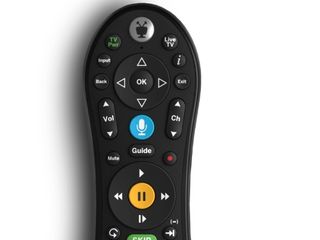About Half of Consumers With Voice Search Actually Use It: TiVo Study

Voice search capabilities are catching on in the pay TV and OTT video worlds, but the pace of consumer adoption could use a bit of a jolt, suggests a new TiVo study on video and pay TV trends.
TiVo, in a study of more than 3,000 adults in the U.S. and Canada, found that of the 20.4% of respondents who have access to voice search for video, just over half (11%) use the capability.
Growth in adoption was relatively flat year-on-year and quarter-over-quarter, but is still 6.6 percentage points from the study from two years ago, TiVo noted in its Q3 2017 Online Video and Pay-TV Trends Report.
About 21.1% said they don’t have voice search capability, but are interested in it.
Among those that do have it, 46.5% said they use a voice remote from a cable operator of satellite TV operator, versus 28.7% who use Amazon’s Fire TV platform, 19.6% who use an Apple TV/remote set-up, and 17.2% use a voice system that works with a game console.
“Pay-TV providers should take note of this trend: consumers are not only aware of voice search functionality, but now that they are accessing voice functionality already in their cars, mobile devices, streaming devices and smart home devices; they will soon be expecting it in their pay-TV offerings as well,” TiVo explained.
TiVo’s latest findings come soon after the company introduced its own lineup of “Vox”-branded products with voice search, and as pay TV operators such as Comcast and Dish Network deploy next-gen versions of their respective voice remotes. Of that group, Comcast has already deployed about 18 million voice remotes that work with its X1 platform.
Multichannel Newsletter
The smarter way to stay on top of the multichannel video marketplace. Sign up below.
RELATED: Comcast Launches New Voice Remote
TiVo’s study also found that those who do use a pay TV provider’s voice search technology, 88.5% use it on a weekly basis, and the largest subsection in that group (30.2%) conduct voice searches one to three times per week.
TiVo’s study also highlighted that cross-catalog search, a capability that enables access to traditional linear TV as well as sources of over-the-top content, has become increasingly important to consumers.
Over half (52.5%) of respondents would enjoy being able to conduct such searches, making it a “must-do” feature, TiVo noted in the study.
Pay TV providers are responding to this trend. Comcast, Layer3 TV and Dish Network, for example, have integrated select OTT TV services onto their respective set-top box platforms. TiVo, meanwhile, has been championing this idea for years, as it already provides access to a range of streaming services alongside digital cable services on its leased and retail devices.
More about TiVo’s study, including portions that touch on the growing cord-cutting trend and consumer desire for a la carte TV and skinny TV package bundling will be featured in the December 18 edition of Multichannel News and Broadcasting & Cable.










